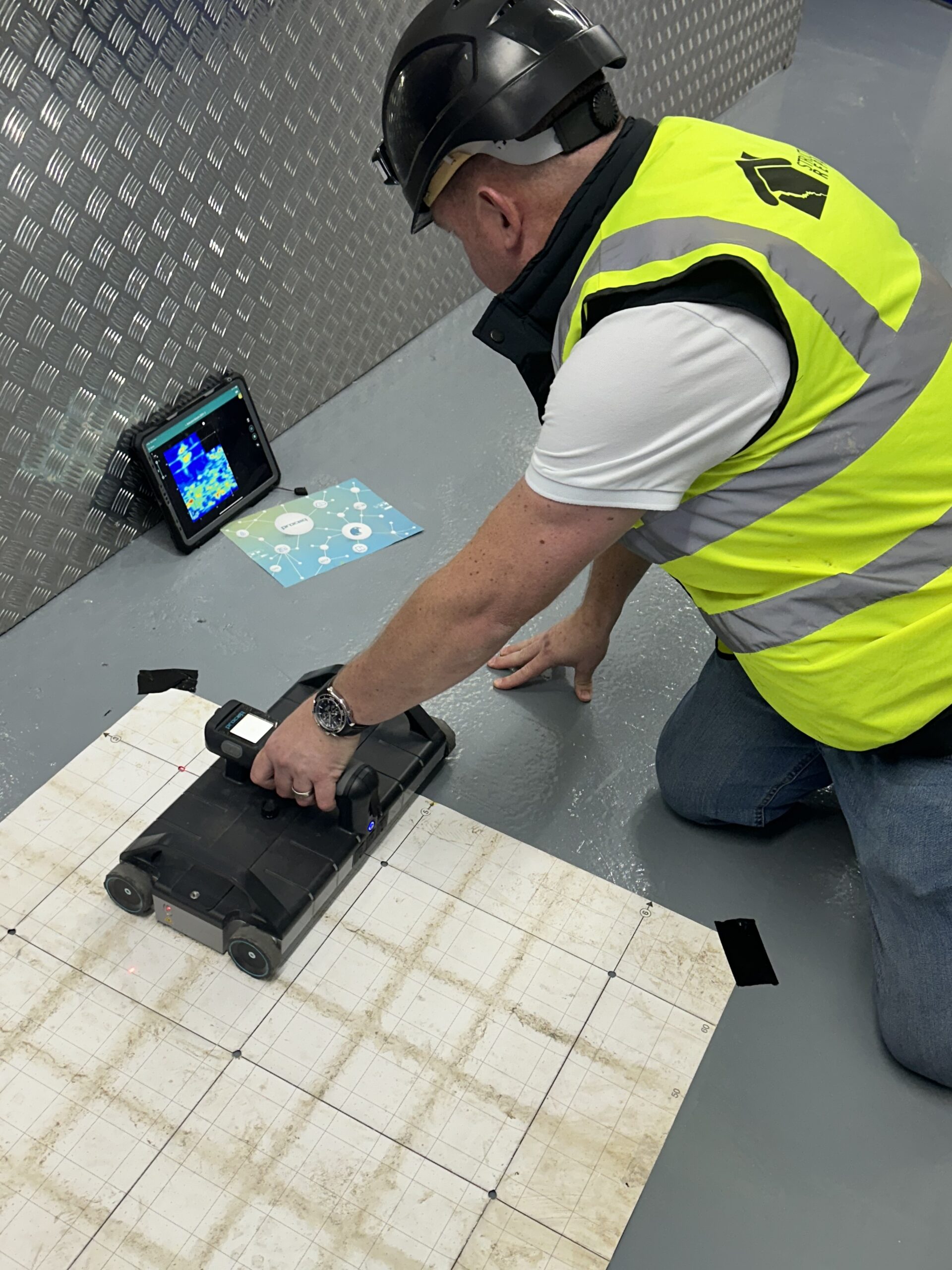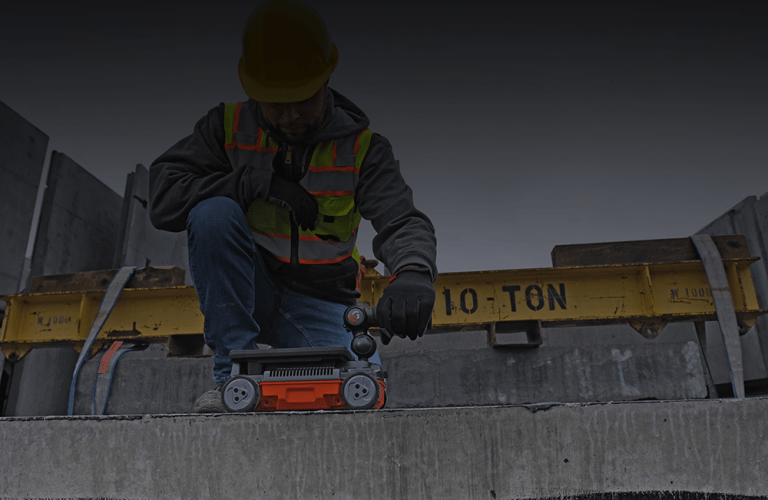Optimizing Performance and Lessening Threats: The Function of Concrete Scanning in Building
In the world of building and construction, where precision and security are critical, the utilization of concrete scanning innovation has actually become an essential tool for task managers and engineers alike. By taking advantage of advanced scanning approaches, construction teams can navigate complicated environments with enhanced efficiency while mitigating possible risks that might threaten both timelines and budgets. The elaborate dance in between making the most of performance and minimizing dangers in construction depend upon the ability to peer underneath the surface, disclosing a world of surprise obstacles and possibilities. The duty of concrete scanning in this fragile equilibrium is not simply encouraging yet transformative, supplying a look into a future where pricey blunders are preempted, safety and security is focused on, and quality is non-negotiable.
Value of Concrete Scanning
Concrete scanning plays an important function in making certain the structural integrity and security of construction tasks by properly spotting embedded things and prospective hazards within concrete structures. By using numerous scanning modern technologies such as ground-penetrating radar (GPR) and electro-magnetic induction, building and construction teams can determine rebar, post-tension cable televisions, avenues, and various other concealed challenges prior to drilling, reducing, or coring into concrete. This aggressive approach helps prevent pricey problems, injuries, and job delays that may occur from mistakenly striking these items during construction tasks.
Additionally, the accurate mapping of embedded objects ensures the reliable implementation of construction plans, reducing the threat of mistakes and guaranteeing the long life and longevity of the built atmosphere. Inevitably, spending in concrete scanning services adds to the total success and security of building and construction projects.

Advanced Modern Technology in Construction
Provided the raising demand for precision and performance in construction methods, the assimilation of sophisticated modern technology has actually ended up being instrumental in boosting job results and making certain ideal safety and security actions. BIM permits for far better partnership among stakeholders, enhanced visualization of the task, and enhanced decision-making throughout the building and construction procedure. The execution of Enhanced Truth (AR) and Virtual Fact (VIRTUAL REALITY) technologies in construction layout and preparation stages allows stakeholders to visualize the final item, recognize prospective concerns, and make necessary adjustments prior to construction starts.

Benefits of Item Mapping
The application of object mapping technology in building and construction projects uses a wide range of advantages that improve job planning and execution. One of the vital benefits of things mapping is its capability to provide specific and thorough info regarding the location of underground energies, architectural aspects, and other items within the building website. This info is important for making sure that excavation and drilling activities are accomplished safely and successfully, decreasing the risk of damage to existing framework.
In addition, things mapping modern technology enables construction teams to create exact 3D designs of the site, permitting for far better visualization of the project and boosted coordination amongst different trades - RainierGPR Concrete Scanning. This improved spatial awareness assists to recognize potential clashes and conflicts early in the planning stages, lowering the requirement for pricey rework and hold-ups throughout construction
In addition, object mapping can additionally simplify the documentation procedure by offering electronic documents of the website before, throughout, and after construction. These documents function as useful references for future upkeep and improvement jobs, inevitably boosting the lasting effectiveness and sustainability of the built setting.
Preventing Pricey Errors
Object mapping technology's duty in construction extends past enhancing task preparation and execution to incorporate a crucial aspect: preventing expensive mistakes. By utilizing innovative concrete scanning techniques, building groups can determine possible threats such as rebar blockage, post-tension cables, or voids within concrete structures. Overall, the proactive usage of concrete scanning modern technologies in building and construction tasks significantly reduces the risk of mistakes and eventually adds to set you back savings and project efficiency.
Ensuring Security and High Quality
To support the greatest standards of safety and security and quality in building and construction tasks, the implementation of concrete scanning technology plays a critical role. By using innovative scanning techniques such as ground-penetrating radar (GPR) and electro-magnetic induction, building groups can spot potential risks concealed within concrete structures prior to commencing any kind of work. see this site This aggressive technique not only minimizes the threat of mishaps on the building website yet also guarantees the architectural honesty of the building.
Concrete scanning also aids in confirming the positioning of rebar, avenues, and post-tension cords, assuring that these components are properly placed as per the layout specs. This precision in situating essential parts assists stop errors throughout the construction process, ultimately leading to a greater high quality ended up product. Additionally, by determining any type of abnormalities or incongruities within the concrete early on, needed adjustments can be made promptly, minimizing the chance of rework and pricey delays.
Fundamentally, concrete scanning technology serves as a valuable tool in securing both the safety of construction employees and the general top quality of the developed atmosphere. Its ability to detect potential dangers and guarantee adherence to layout requirements makes it a vital property in modern building and construction techniques.

Verdict
Finally, concrete scanning plays a vital role in optimizing performance and lessening dangers in construction tasks. By using innovative modern technology for item mapping, potential costly blunders can be protected against, ensuring safety and high quality of the final structure. It is essential for construction firms to focus on using concrete scanning to enhance performance, mitigate risks, and supply high-quality lead to their projects.
Concrete scanning plays a crucial role in ensuring the architectural honesty and safety of construction tasks by precisely identifying ingrained items and potential dangers within concrete frameworks. The implementation of Enhanced Truth (AR) and Online Reality (VR) modern technologies in construction layout and planning phases makes it possible for stakeholders to visualize the final product, recognize prospective issues, and make necessary modifications before building and check it out construction begins. By employing innovative concrete scanning techniques, construction teams can determine potential risks such as rebar blockage, post-tension wires, or spaces within concrete structures. Overall, the aggressive use of concrete scanning technologies in construction tasks significantly decreases the threat of errors and ultimately contributes to set you back financial savings and project performance.
To maintain the highest possible criteria of safety and security and top quality in building tasks, the application of concrete scanning try this web-site technology plays a crucial duty.